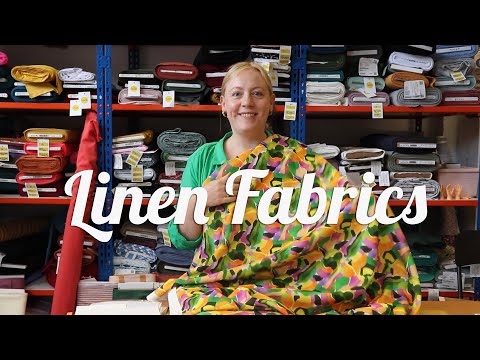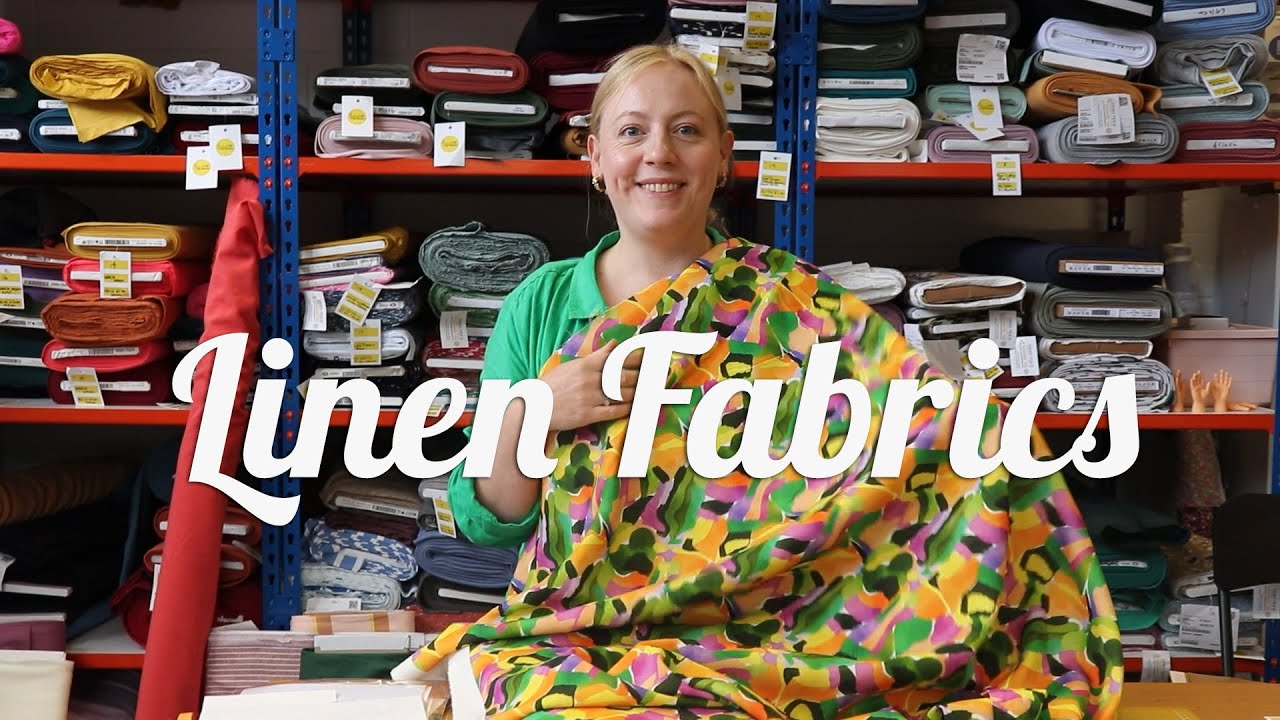Discover the enchanting world of green linen fabric and indulge in its timeless elegance. Crafted from the finest fibers, this exquisite fabric showcases the perfect blend of nature’s hues and luxurious comfort. With its vibrant and refreshing shade of green, linen brings a touch of tranquility and harmony to any space, making it a perfect choice for those seeking a serene ambiance. The green color evokes feelings of rejuvenation and renewal, creating a soothing atmosphere that invites relaxation and revitalization. Whether used for draperies, upholstery, or clothing, this versatile fabric effortlessly enhances any design, adding a touch of sophistication and refinement. Its natural cooling properties and breathability make it ideal for warm climates, ensuring comfort even in the hottest of seasons. The durability and strength of linen fabric make it a practical choice, offering long-lasting beauty that stands the test of time. Embrace the allure of green linen fabric and let its serene charm transform your surroundings into a haven of tranquility and style.

2023 Trending Green Linen Fabric
| Feature | Description |
|---|---|
| Color | Green linen fabric offers a rich and vibrant color that adds a touch of nature and serenity to any space. Its various shades of green, ranging from light pastels to deep emerald tones, provide versatility in design options. |
| Texture | The texture of green linen fabric is exceptionally unique, combining a smooth, refined surface with a slightly coarse feel. This distinctive texture not only adds visual interest but also enhances the fabric’s durability and breathability. |
| Sustainability | With an increasing focus on eco-friendly materials, green linen fabric stands out as an excellent choice. Linen is a natural fiber derived from flax plants, making it biodegradable and renewable. It requires minimal water and pesticide usage during cultivation, making it an environmentally conscious option. |
| Temperature Regulation | One of the remarkable qualities of green linen fabric is its ability to regulate temperature. It keeps you cool during hot summer days by wicking away moisture and allowing air circulation. Additionally, it provides insulation during colder months, keeping you comfortably warm. |
| Versatility | Green linen fabric effortlessly adapts to various settings and design styles, making it highly versatile. Whether used for upholstery, curtains, or clothing, it adds an elegant touch and complements both modern and traditional aesthetics. |
As an expert in textiles, I highly recommend embracing the trend of green linen fabric in 2023. Its captivating color, unique texture, and sustainable nature set it apart from other fabrics. With its temperature-regulating properties and versatility, green linen fabric is a perfect choice for those seeking an eco-friendly, functional, and stylish material. Incorporating this fabric into your interior design or wardrobe will undoubtedly elevate your space and fashion sense.
Title: The Versatile Allure of Linen: A Must-Have Fabric for Every Occasion
Linen Fabrics (Shortened):
Linen, a timeless textile marvel, has captured the hearts of fashion enthusiasts and interior designers alike. Renowned for its exceptional breathability and luxurious feel, linen fabrics have become a staple in wardrobes and homes around the world.
With its origins dating back thousands of years, linen has stood the test of time due to its remarkable versatility. Whether you’re seeking an elegant ensemble for a formal event or a cozy yet stylish home decor, linen fabrics never fail to impress.
Thanks to its unique natural properties, linen offers unparalleled comfort, making it an ideal choice for warm climates or summer wear. Its breathability allows air to circulate freely, keeping you cool and dry even in the hottest of days. Additionally, linen’s moisture-wicking abilities help absorb perspiration, ensuring you stay fresh and comfortable throughout the day.
Beyond its functional advantages, linen boasts a distinct charm that adds a touch of sophistication to any setting. Its lightly textured weave and natural drape create an effortlessly elegant aesthetic, making linen garments and home furnishings truly eye-catching. Whether it’s a flowing linen dress or a set of delicately embroidered linen curtains, this fabric exudes a sense of timeless beauty.
Moreover, linen fabrics are known for their durability and longevity. With proper care, linen garments can withstand countless wears and washes, becoming cherished pieces that age gracefully. This eco-friendly fiber is also biodegradable, making it an excellent choice for those seeking sustainable fashion and interior design options.
From classic linen shirts to tailored linen suits, this fabric effortlessly bridges the gap between casual and formal attire. Its ability to adapt to various styles and occasions makes it a versatile choice for both men and women. Linen’s natural wrinkles also lend a relaxed and effortlessly chic look, allowing you to embrace a more laid-back, yet sophisticated, approach to fashion.
In conclusion, linen fabrics have rightfully earned their place as a must-have in any wardrobe or home decor collection. Its unparalleled breathability, timeless beauty, and remarkable durability make it an irresistible choice for those seeking both style and comfort. Embrace the allure of linen, and let its natural elegance elevate your fashion and interior design endeavors.
The Rise of Green Linen Fabric: A Sustainable Choice for Fashion
In recent years, the fashion industry has been making significant strides towards sustainability. As consumers become more conscious of the environmental impact of their clothing choices, designers and manufacturers have been exploring eco-friendly alternatives. Green linen fabric has emerged as one such sustainable choice, offering a range of benefits for both the environment and the wearer. Let’s delve deeper into this fascinating fabric and discover why it has become a popular choice in the fashion world.
Natural and Renewable
Green linen fabric is made from the flax plant, a crop that requires significantly less water and pesticides compared to other natural fibers like cotton. Flax can be grown in diverse climates and does not require excessive irrigation, making it an excellent choice for sustainable farming. Furthermore, every part of the flax plant is used, minimizing waste and maximizing resource efficiency. The plant’s long fibers are spun into yarn, which is then woven into linen fabric, creating a durable and versatile material that is highly valued in the textile industry.
Eco-Friendly Manufacturing Process
The production of green linen fabric involves a relatively low environmental impact compared to other fabrics. Flax fibers are naturally resistant to pests and diseases, reducing the need for harmful pesticides. The manufacturing process itself also consumes less energy and water compared to synthetic fabrics. Linen production is a closed-loop process, meaning that the water and solvents used are recycled, minimizing waste and pollution. Additionally, linen production produces minimal carbon emissions, making it a carbon-neutral fabric choice.
Durability and Versatility
Green linen fabric is renowned for its durability and longevity. It is up to two to three times stronger than cotton, making it a sturdy choice for clothing and household items. Linen also has natural anti-bacterial properties, making it resistant to dirt and stains. This fabric is highly breathable and has excellent moisture-wicking properties, making it ideal for hot and humid climates. Linen garments are known for their ability to keep the wearer cool and comfortable, making them a popular choice for summer fashion.
Biodegradable and Recyclable
One of the greatest advantages of green linen fabric is its eco-friendly end-of-life cycle. Unlike synthetic fabrics, which can take hundreds of years to decompose, linen is biodegradable and can decompose within weeks or months. When disposed of in landfills, linen fabric breaks down naturally, releasing valuable nutrients back into the soil. Furthermore, linen can be recycled and repurposed into various products, reducing waste and minimizing the need for new resources.
Supporting Ethical and Fair Trade Practices
Choosing green linen fabric also means supporting ethical and fair trade practices. Linen production often takes place in developing countries, providing employment opportunities for local communities. Additionally, flax farming requires skilled labor, ensuring fair wages for workers involved in the cultivation and harvesting process. By opting for linen garments, consumers can contribute to sustainable development and fair trade practices, positively impacting both people and the planet.
In conclusion, green linen fabric is a sustainable choice that offers numerous benefits for both the environment and consumers. Its natural and renewable properties, eco-friendly manufacturing process, durability, biodegradability, and support for ethical and fair trade practices make it an attractive option in the fashion industry. As sustainable fashion continues to gain momentum, green linen fabric is set to play a significant role in shaping a greener and more responsible future for the industry.
List of Green Linen Fabric
- Soft and breathable texture
- Natural and eco-friendly material
- Vibrant and refreshing color options
- Excellent moisture-wicking properties
- Durable and long-lasting
- Wrinkle-resistant and easy to maintain
- Suitable for various clothing and home decor projects
- Provides a cool and comfortable feel
- Resistant to fading and color bleeding
- Offers a luxurious and sophisticated look

